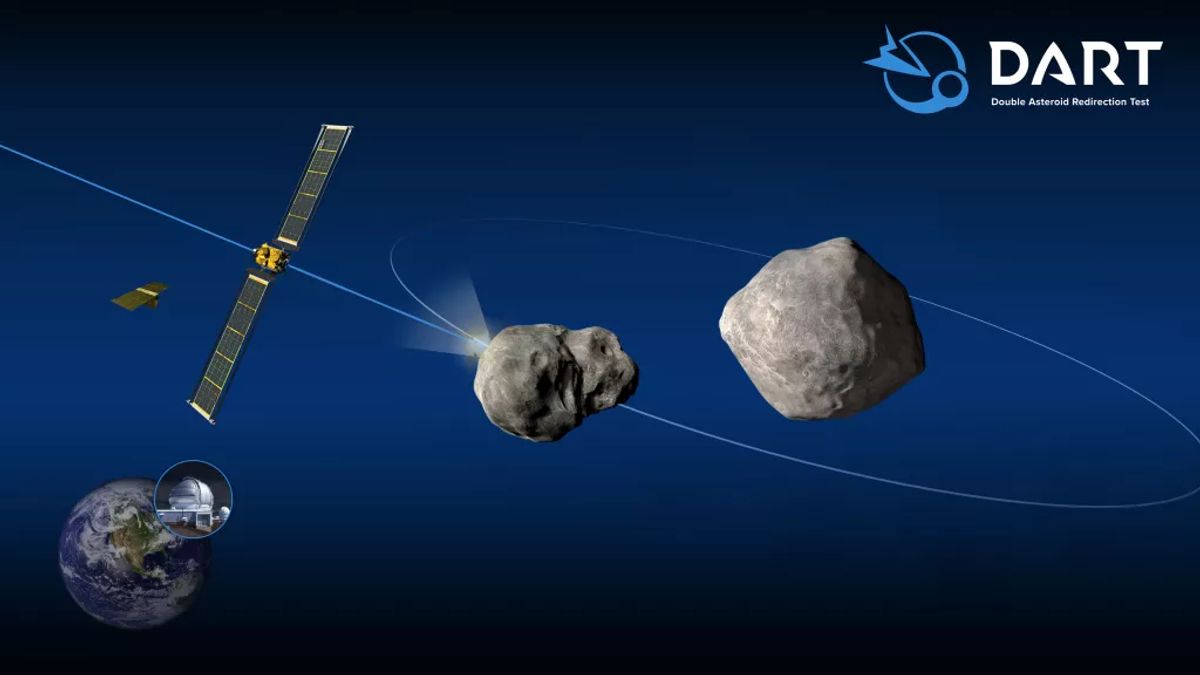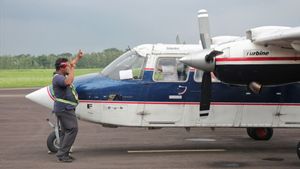JAKARTA - The National Aeronautics and Space Administration (NASA) is currently preparing for a space mission that crashed an asteroid with their spacecraft.
Dubbed the Double Asteroid Redirection Test (DART), the mission is designed to test kinetic impactor techniques to deflect any asteroid or comet that might impact Earth.
The DART launch will be scheduled for Tuesday, November 23 at 10:20 p.m. PT, aboard a SpaceX Falcon 9 rocket from Vandenberg Space Force Base in California. The spacecraft will head to the Solar System and will arrive at the binary asteroid system in the fall of 2022 to try out impact and deflection maneuvers.
Citing Digital Trends, Monday, November 8, in addition, in this mission NASA will also see if it's a viable way to protect Earth from potentially dangerous asteroid impacts.
While most of the more recent asteroids have shot harmlessly past Earth, a small number of so-called "Potentially Hazardous Objects" can impact the planet.
DART will head for a pair of asteroids, one larger body called Didymos, and another smaller one called Dimorphos. While neither of these asteroids poses any real danger to Earth, it will be a workout if an asteroid threatens the planet.
Built and maintained by the Johns Hopkins Applied Physics Lab (APL) in Maryland, the DART spacecraft will deliberately crash into Dimorphos at 4.1 miles per second (6.6 km/s), or 14,760 mph (23,760 kph), causing The moonlet's orbital speed changes by a fraction of a percent, in turn changing its orbit around Didymos.
The asteroid system, which is currently located 6.8 million miles (11 million kilometers) from Earth, does not pose any risk to our planet. However, NASA will use ground-based telescopes to observe and measure differences in the asteroid system after the DART impact test, to assess whether this technology can be used to deflect potentially dangerous near-Earth asteroids in the future.
“The DART spacecraft, its main body is about 100 times smaller than Dimorphos, the asteroid it is targeting. So you can see this is not going to destroy the asteroid. This will only provide a small boost. This will actually bend its path around the larger asteroid. So we demonstrated asteroid deflection in this dual asteroid system," said Nancy Chabot, head of DART coordination at the Johns Hopkins University Applied Physics Laboratory (APL).
The DART spacecraft will guide itself using a technology called SmartNav, which uses computational algorithms to locate the asteroid Dimorphos and direct the craft towards it.
The English, Chinese, Japanese, Arabic, and French versions are automatically generated by the AI. So there may still be inaccuracies in translating, please always see Indonesian as our main language. (system supported by DigitalSiber.id)













